Happy and satisfied customers that’ll stick with you over the long term.
That’s the ultimate goal for any business, right?
You want to make sure your company is meeting—and exceeding—your customers’ expectations in every possible way so they not only buy again but also spread the word through social media and referrals.
The tricky part is that customer needs and expectations have evolved over time.
Today’s customers want personalized (and often instant) customer service and tailored experiences—and they won’t stick with a business that doesn’t deliver.
In fact, in a survey by Salesforce, 76% of customers said “it’s easier than ever to take their business elsewhere—switching from brand to brand to find an experience that matches their expectations.”1
So, it’s probably in your best interest to learn how to identify, meet, and effectively exceed customer expectations.
In this post, we’ll look at:
- Why is it important to meet customer expectations?
- How to identify customer needs and expectations
- 7 ways to meet and exceed customer expectations
- Examples of companies that exceeded customer expectations
Let’s get into it.
Want to consistently exceed your customers’ expectations? See how customer-obsessed your business is—and where you can improve.
Why is it important to meet customer expectations?
Here’s the thing. You won’t have a business without any customers, which is why it’s important to make sure that you can generate customers and keep them coming back. Here are a few reasons that illustrate how important a happy customer is.
Just a few benefits of meeting customer expectations:
It creates repeat customers.
You may have heard some version of this statistic before: it costs businesses at least five times more money and resources to acquire a new customer than it does to keep an existing one.2
It doesn’t take a mathematician to realize that a 500% increase in your marketing costs isn’t something most small businesses would enjoy. That’s why many businesses are making it a goal to provide exceptional customer experience to keep their customers coming back.
It sets you apart from competition.
With such a competitive marketplace out there, customer service is often the number one thing that differentiates businesses in a customer’s eyes.3 This goes for getting new customers and keeping old ones.
So when you can prove to a customer that you understand and anticipate their needs, they’re much more likely to choose or come back to you instead of shopping around to your competitors.
Word of mouth travels faster than you think.
One survey found that when a customer has a poor experience, they’ll tell 15 people.3 And when they have a good experience, they’ll tell 11. That means that every single customer experience has a huge impact on your reputation—especially if that experience leaves the customer with a bad taste in their mouth.
Just take a look at these examples of customer reviews.
How to identify customer needs and expectations
Before you can beat your customers’ expectations, you need to know what they are. But how do you know what those expectations are without being psychic? Let’s look at a few ways to do it.
Ask your customers directly.
The fastest and easiest way to understand your customers is to ask them. You can do this by sending out an email survey or doing one-on-one interviews.
Here’s a short-and-sweet email survey example from the airline AirAsia. When you click it, it leads to an optional extended survey with more questions:
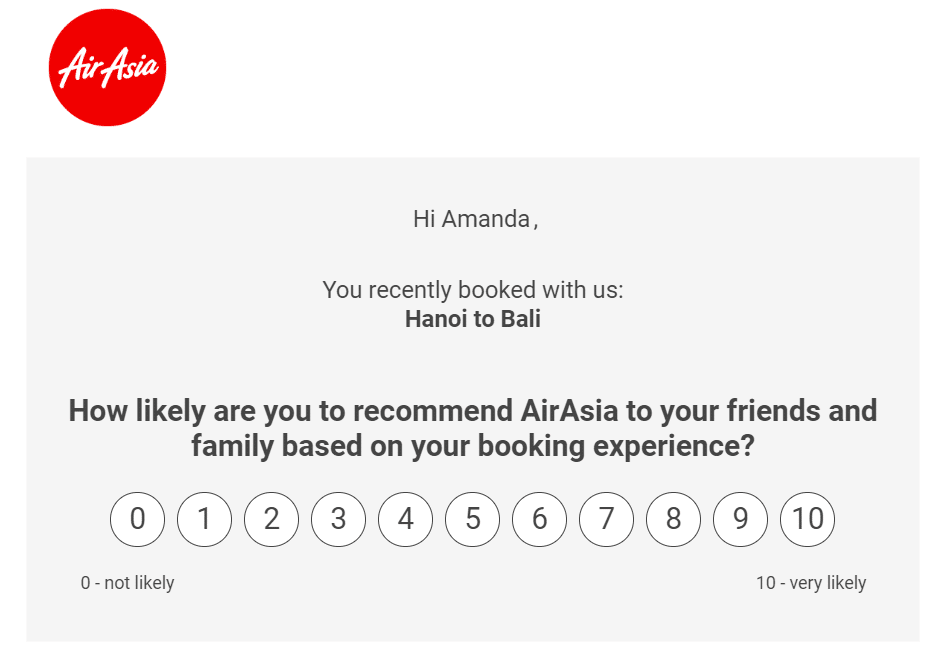
Here are some questions you can ask in your survey or interview:
- On a scale of 1 to 10, how would you rate your experience with our company?
- Is there any way(s) that we’ve exceeded your expectations? If so, please explain.
- Is there any way(s) that we’ve failed to meet your expectations? If so, please explain.
- Would you recommend our company to others? Why or why not?
- What can we do to help improve your experience?
As an added bonus, asking your customers about their experience (and of course offering solutions to any issues they might be having) is an excellent way to show them that you actually care about their needs and expectations. It’s a win-win.
Ask your customer service team.
Another simple way to understand what your customers want is to talk to the people who are already dealing with them every day. Your customer service team is one of the most valuable sources of customer information you have.
Ask them questions like:
- What do our customers love about us? Which expectations are we already meeting?
- What are the top three issues, complaints, or concerns that you hear from our customers?
- How do you think we can shift the customer experience to do more things they love and less things they don’t?
If you can, have an in-person or virtual meeting where your customer service team can share their thoughts and experiences.
Learn more about customer service teamwork.
A real-time conversation tends to be the best way to figure out the highest priorities based on how often different team members bring them up (and how passionate they are about them). If you can’t have a group meeting, try sending out a survey or have one-on-one meetings.
And while you’re at it, ask your employees how you can make their experiences better too! It’s easier to have satisfied customers if you’ve got a happy team.
Do some competitive research.
Put on your detective hat and do some investigating. What are customers saying about your biggest competitors online? What are they absolutely raving about—and what attracts complaints? See where your company compares in terms of the specific incidents and business model elements that you find. What aren’t you doing yet that you can implement?
Here are a few places you can look:
- Their own websites (but of course, be aware that those reviews might be a bit biased!)
- Company social media accounts, like Facebook, Twitter, Instagram, and LinkedIn
- Third-party review sites, like Google Business, Yelp, Angie’s List, and Foursquare
This example of a pizza place shows that the reviewer likes a lot of toppings and minimal grease. If you were a pizza restaurant that cared about attracting a health-conscious target audience, you could add this to your checklist of possible ways to make your customers happier.
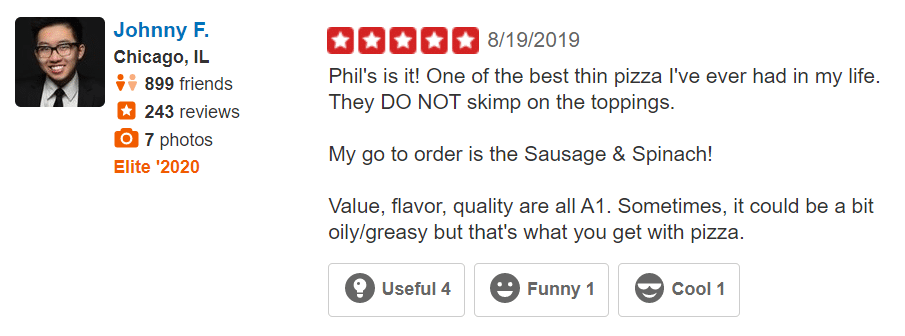
Once you have a solid idea of what your customers’ needs and expectations are, you’re set up to do an awesome job of meeting and exceeding them. Let’s look at some ways that you can do that.
7 ways to meet and exceed customer expectations
1. Use the element of surprise.
Meeting customer expectations is great, but we’d argue that one of the ways to exceed expectations is by, well, surprising your customers in ways they didn’t expect.
For example, throw a party and invite all your customers. If they’re typically a 9-to-5 crowd, opt for a Saturday or Sunday afternoon or evening to maximize their availability.
To make them really feel appreciated, personalize the invitation—for example, by sending a direct message on social platforms (if you’re connected) or through email.
Tools like Eventbrite have custom email invitations, built-in social sharing, and other targeted promotions that businesses can use to spread the word about their events:
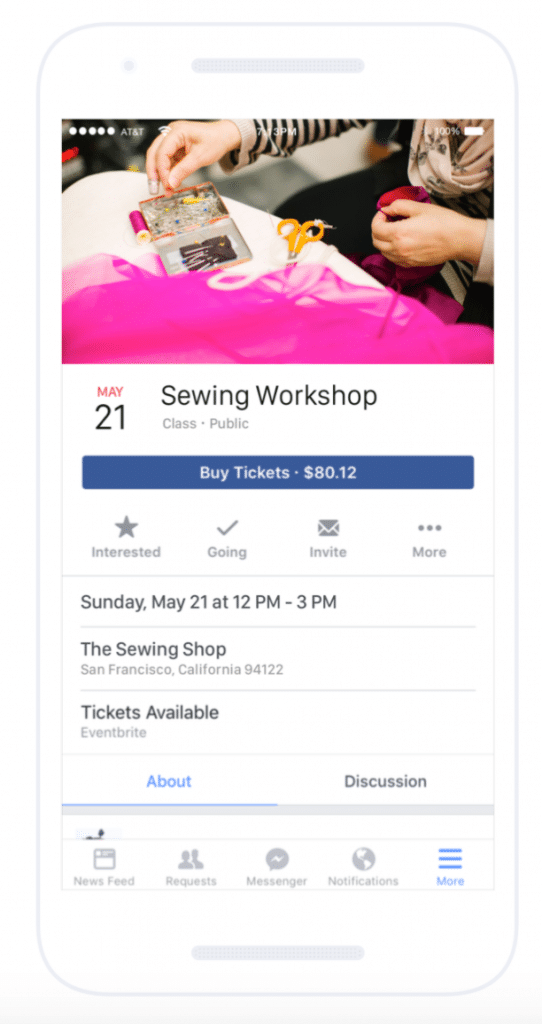
Choose a party theme that’s in line with your customer needs and expectations. For example, if you own a vegan or wellness store, don’t surprise customers with a BBQ or cocktail party. Organize an apple-picking event or a green tea tasting instead.
2. Improve your response time.
If your customers ask a question, make sure to respond in a timely manner. HubSpot says that 82% of consumers look for an immediate response from brands on marketing or sales questions.4 So, you know, no pressure.

And if your customers seem to be frustrated about a specific issue, don’t just send them to your help page with a generic message—write a response that offers a direct resolution for them that requires minimal work on their part.
By helping customers instead of just pitching your products all the time, you’re proving your business is determined to meet their needs and expectations—not your own.
3. Provide a seamless experience across all channels.
You can’t expect customers to look at your business and see all your different teams and complex processes and workflows.
Meaning… you can’t expect them to just understand nitty gritty details like why your call center staff isn’t aware of the info they gave your social media team in a Facebook conversation the day before.
This makes it crucial to have an omnichannel customer service or communications system in place so that you can give customers a consistent experience.
For instance, sometimes a customer may want to take their conversation from an online chat over to a phone call.
That’s why businesses should have a tool that lets you have conversations with customers on the channels of their choice.
For example, RingCentral Contact Center™ lets you do this, and it even keeps a record of your call logs and communication history. This will help everyone on your team know why this customer contacted you and what they’re expecting:

RingCentral lets you provide a customer experience that’s consistent across various channels.
Sixty percent of consumers change their contact channel based on where they are and what they’re doing.5
By meeting them on the channel of their choice, you can show them that you respect their time and preferences—and create a more unified, cohesive experience for your customers. Less time wasted on repeating information, more happy customers.
4. Don’t make promises you can’t keep.
Naturally, you want to stand out from the competition and offer the best price or customer service, but you have to be realistic when there’s a chance you can’t deliver on your promises. Once that trust is broken, it’s hard to get back.
For example, think about next-day delivery or shipping. National holidays and high-traffic periods can delay same-day delivery, the same way national disasters like floods can limit a courier’s ability to meet the expected delivery date.
The best way to avoid these situations is to avoid locking down expectations unless you’re sure you can deliver.
If a customer wants a solution presented by next week but you aren’t 100% sure if it’s doable, don’t say yes. Tell them that next week is possible, but you’ll solve their problem within 10 days at the latest.
Not only will this give you some breathing space, but it also means your customers won’t be disappointed by a promise you weren’t certain you could fulfill in the first place.
5. Get personal.
There’s nothing more impersonal than using a standard, one-size-fits-all marketing message for your customers. This might have worked back in the ’90s, but it won’t fly today.
Consumers want companies to see them as individuals and present tailor-made offerings. In fact, Epsilon’s research found that 80% of consumers are more likely to shop from brands that offer personalized experiences.6
What does this mean for your business? It means that to meet your customers’ needs, you have to offer an experience that’s customized to their preferences.
Here are a few things you can do to achieve that:
- Use their names: Knowing and mentioning your customers’ names sounds simple, but the gesture makes a big impact in terms of building relationships and trust. Research shows that people experience enhanced brain activity when they hear their names, and the experience is more memorable.7 No wonder brands like Starbucks place so much emphasis on remembering their customers’ names.
- Set up a loyalty program: Based on your customers’ unique spending habits, you can allow them to unlock special rewards or other discounts with you once they reach a certain milestone. For example, a dessert shop might give a customer a free cookie on their 50th visit. You could say something simple like, “Thanks for being a regular. Your cookie is on us today!” This is the kind of thing that brightens up customers’ days and helps you exceed the average person’s customer experience expectations.
- Stay in constant contact: If you want to keep in touch with customers, don’t make them do the work. It’s your responsibility as a business owner to take care of your clients—both before as well as after the sales process. Make sure to strengthen your relationships by offering small gifts, sending personalized content, and maybe even featuring them in feel-good campaigns that build a sense of community around your brand.
6. Help your customers help themselves.
If your customers have a need for speed (and most do), you need to give them a way to figure it out by themselves.
From troubleshooting guides to self-checkouts and self-serve options on phone menus, there are more ways than ever for people to resolve their issues themselves. (Forty percent of consumers will only reach out to customer support after they’ve researched their questions on a website.8)
The catch is, you have to be strategic about it and create self-serve resources that customers would want to use. Here are a few ways to do that:
-
- Create a chatbot.
Chatbots provide unique responses based on the conversations they have with your customers. The conversation typically starts with letting customers choose what they have a question about. Then the chatbot presents a list of potential answers or subtopics that may be relevant to the customer’s question. Using free tools like BotStar, you can set up a chatbot for both your website and Facebook Messenger.
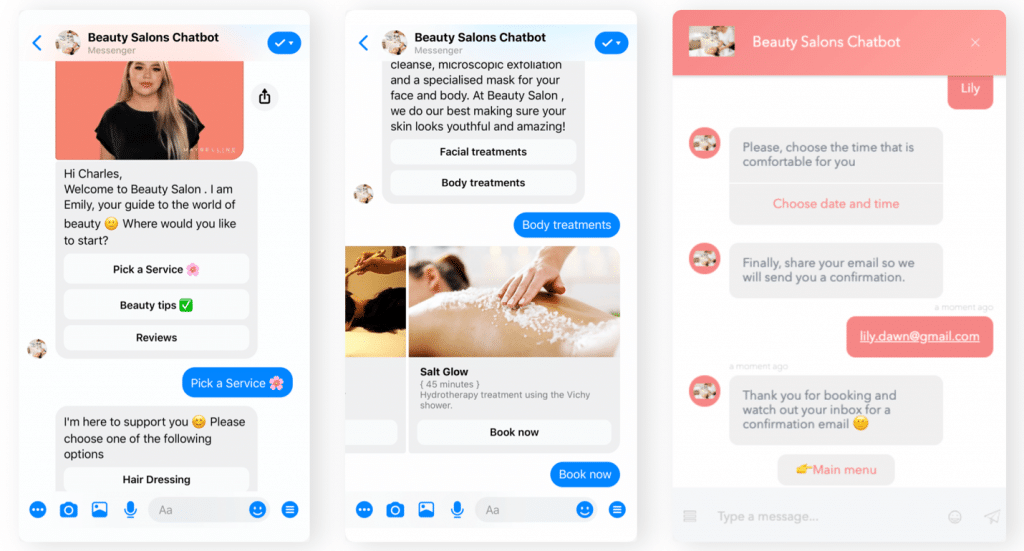
Think of a knowledge base as an encyclopedia dedicated to your products or services. All the answers that customers might need should be right at their fingertips. For example, RingCentral’s knowledge base provides answers to the most common questions people ask about our contact center solutions:
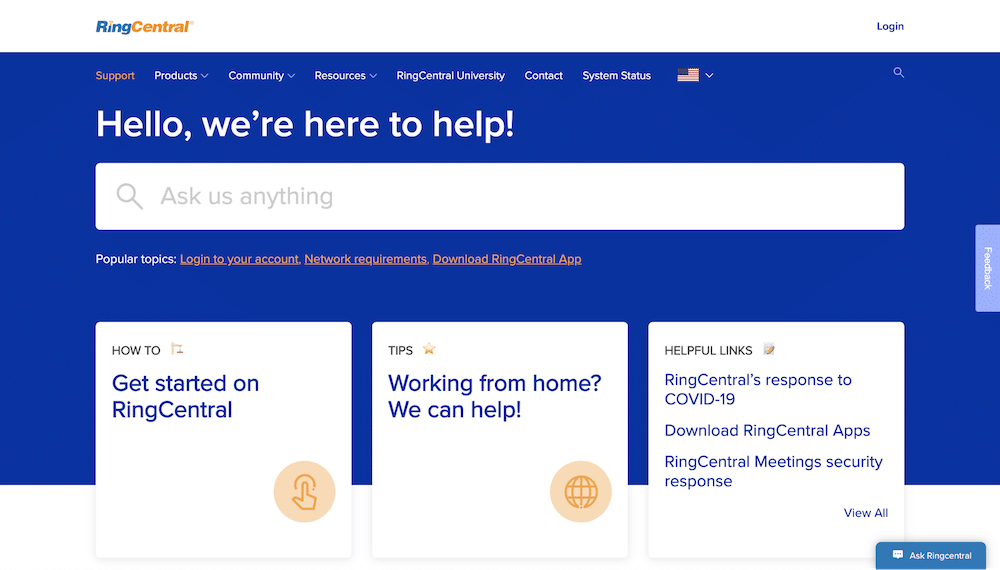
-
- Offer community forums.
Although your self-serve resources should largely consist of content owned by your company, you might also consider creating an online community for your customers, like a message board or forum. Here, customers can talk to each other about how to use your product, business challenges they’re facing, and build a community that’s super valuable for you. (Got ideas for product updates you want to run by some people? This is the place to do it.)
The RingCentral Support Community, for instance, is a place for our customers to share ideas, chat, and connect with others who are passionate about finding new ways to communicate and collaborate:
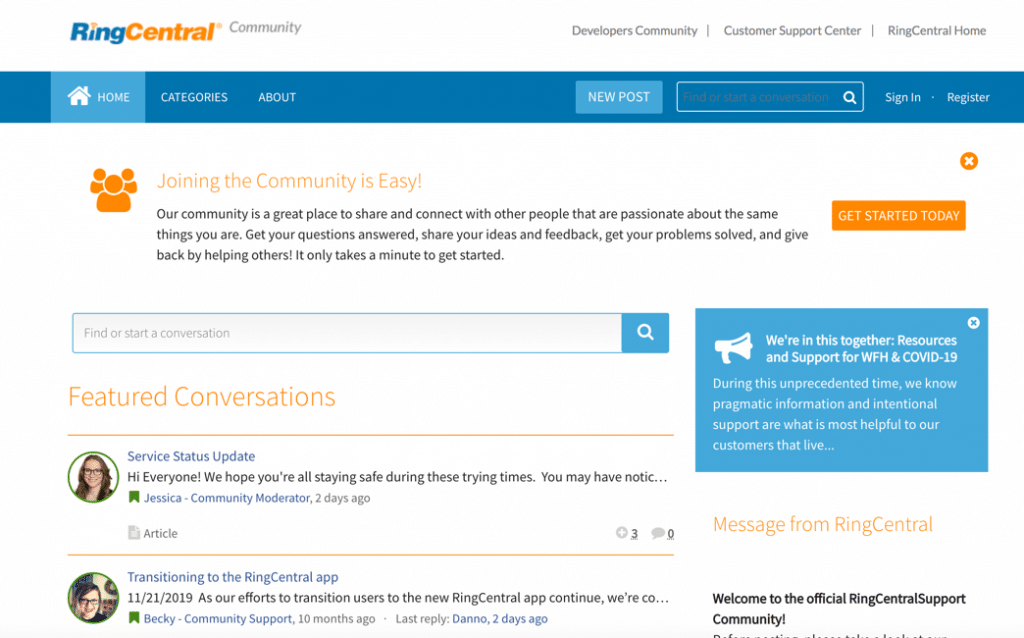
7. Involve your customers in the development process.
Who knows your product or service better than your customers? They are the people who buy and use what you’re offering, so you should definitely ask them what they need.
According to research, 77% of consumers view brands more favorably when they seek out and apply customer feedback.9
You can collaborate with your customers through a variety of channels including:
- Social media platforms: Conduct polls on Facebook and Twitter to collect feedback and ideas for a new product.
- Messaging communities (think WhatsApp groups): Start threads to pick people’s brains on trends and technologies that you otherwise would have purchased through costly reports.
- In-store collaboration: Empower customers with the ability to customize the design/color/shape of the product (think Build-A-Bear or Medley furniture).
3 examples of companies that exceeded customer expectations
Some companies have built entire businesses on exceeding customer expectations. Here are three examples—along with ideas you can steal:
1. Picky Bars Club
Picky Bars Club is a subscription box business that sends healthy granola-style bars to customers on a monthly basis.
If you sign up to the “Picky Club,” you get regular deliveries as well as several perks, like opportunities to try new flavors. One of the most intriguing perks is the bundle of surprise goodies the company sends (whenever they feel like it):

The surprise factor probably has the most appeal, as customers never know what they’re going to get and when they’re going to get it.
A surprise doesn’t always need to be a free item. Businesses that show appreciation with simple, handwritten thank-you notes also get mentioned in positive reviews, social media conversations, and friend referrals. If you don’t have the resources to design handwritten notes, you can look into a service like Vistaprint.
2. PawTree
PawTree is a pet nutrition company that makes customized treats for dog and cat owners. With two different customer segments, personalized marketing can sometimes be challenging to execute, but the company has a clever solution.
On its Pet Profile page, PawTree has a pet detector that allows pet owners to assess their needs and goals, as well as what products they should buy for their pet.
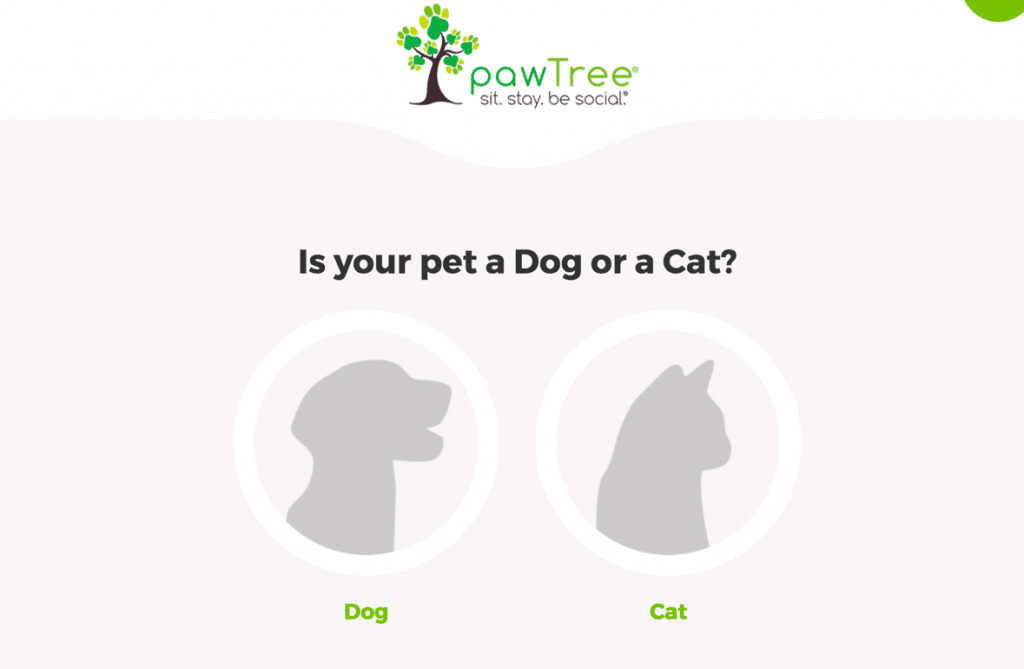
You can’t get this level of personalization with something like a simple article or newsletter. But that bit of extra thought and care goes a long way in creating a cool customer experience that people will remember.
3. Dresden
Dresden is a retailer that makes upcycled sunglasses and eyeglasses from old fishing nets and plastic waste. The company then sells the finished pairs at affordable prices.
Besides selling great products, Dresden also offers an interesting co-creation opportunity. Unlike other eyewear companies that sell pre-designed merchandise on their shelves and websites, Dresden lets you design your own pair of sunglasses or eyeglasses:
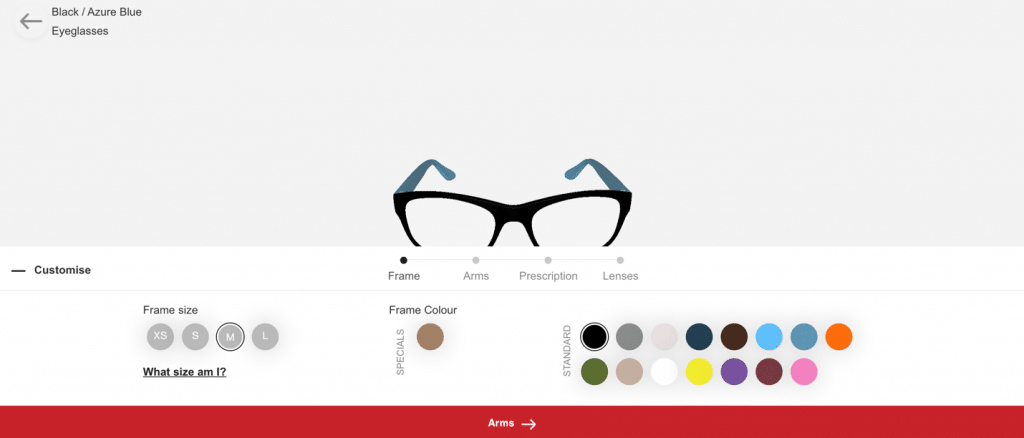
If you can do it—and if your product or service would benefit from this level of customization—give your customers the opportunity to create their own products (especially if you cater to younger demographics who expect individuality).
Meeting and exceeding customer expectations isn’t optional anymore—it’s a must
Today’s customers expect businesses to go the extra mile in order to meet their needs.
Whether you’re running a product-based or service-based business, the way you approach your customers directly impacts their perception of your company.
The good news is that great customer experiences can help you make customers happy and bring in more business.
By personalizing your interactions, being thoughtful, and anticipating what your customers need before they tell you, you can build a reputation on exceeding your customers’ expectations—and nurture lasting relationships that’ll take you through both good and challenging times.
1salesforce.com/research/customer-expectations
2forbes.com/sites/jiawertz/2018/09/12/dont-spend-5-times-more-attracting-new-customers-nurture-the-existing-ones
3businesswire.com/news/home/20171215005416/en/WellActually-Americans-Customer-Service
4blog.hubspot.com/sales/live-chat-go-to-market-flaw
5pages.newvoicemedia.com/rs/newvoicemedia/images/inner-circle-guide-to-multichannel-customer-contact.pdf
6us.epsilon.com/pressroom/new-epsilon-research-indicates-80-of-consumers-are-more-likely-to-make-a-purchase-when-brands-offer-personalized-experiences
7ncbi.nlm.nih.gov/pmc/articles/PMC1647299
8zendesk.com/resources/searching-for-self-service
9info.microsoft.com/rs/157-GQE-382/images/EN-CNTNT-Report-DynService-2017-global-state-customer-service-en-au.pdf
Originally published Mar 01, 2020, updated Jul 25, 2024





